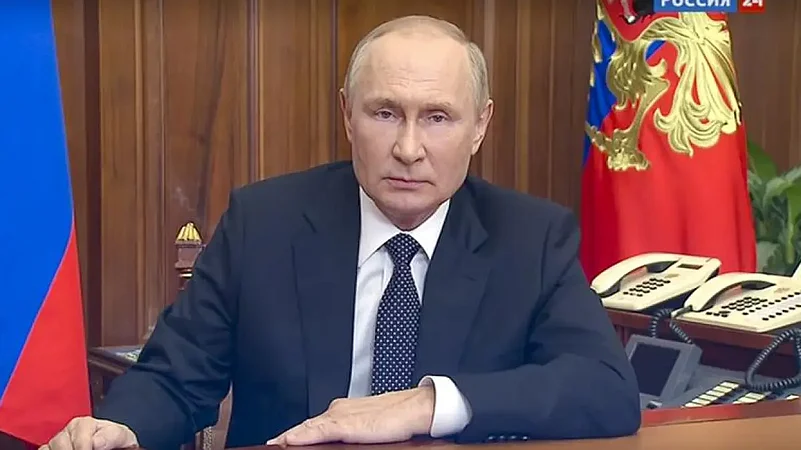On the 1000th day of Russia’s invasion of Ukraine, President Vladimir Putin signed a revised nuclear doctrine that lowers the threshold for the use of nuclear weapons. The move comes amid escalating tensions and a significant shift in the dynamics of the ongoing conflict, particularly with the recent approval by US President Joe Biden for Ukraine to use long-range missiles supplied by the US to strike deep into Russian territory. This updated nuclear doctrine serves as a clear signal from the Kremlin regarding its stance on the use of nuclear weapons in the context of the war, raising concerns over potential escalation.
Advertisement
The updated doctrine, formally known as “The basics of state policy in the field of nuclear deterrence”, signed by Putin implemented a revised version of Russia’s nuclear doctrine that Putin described in televised remarks. It highlights the threats that would make Russia, the world’s biggest nuclear power, contemplate using such weapons.
Key Changes in Russia’s Nuclear Doctrine
The new doctrine says that Russia would consider a nuclear strike if it, or its ally Belarus, faced aggression “with use of conventional weapons that created a critical threat to their sovereignty and (or) their territorial integrity”.
"Russia has always regarded nuclear weapons as a deterrent, the use of which is an extreme, forced measure," Kremlin spokesman Dmitry Peskov told journalists, confirming that under the new doctrine, the use of Western non-nuclear missiles by the Ukrainian Armed Forces against Russia could entail a nuclear response.
Advertisement
"Nuclear deterrence is aimed at ensuring that a potential enemy understands the inevitability of retaliation in case of aggression against the Russian Federation and its allies," Peskov said.
The updated doctrine retains the provision that decisions on the use of nuclear weapons will be made by the head of state. It also stresses that the state policy in the field of nuclear deterrence is defensive in nature.
On Tuesday, the Kremlin vowed to defeat Ukraine, saying Western support for Kyiv would have no impact on the conflict. “Western aid cannot affect the outcome of our operation. It continues, and will be completed,” it added.
"The military operation against Kyiv continues," Kremlin spokesman Dmitry Peskov said.
Referring to Ukraine and its Western allies, Peskov added that aggression by a non-nuclear state with the participation of a nuclear state is considered as a joint attack.
The nuclear decree will also be extended to Russia’s close ally Belarus. This indicates Kremlin’s swiftness to force the West to back down while Russia continues its slow moving offence in Ukraine.
Since the beginning of the Russia-Ukraine war in February 2022, the deadliest conflict Europe has seen post World War II, over one million people have reportedly either died or have been severely injured.
Advertisement
Putin ordered changes to the nuclear doctrine weeks before the November US presidential elections. The change to the doctrine was an attempt by Putin to draw a red line for the West, Reuters reported citing analysts.
Russian military was monitoring the situation very closely, Peskov said while commenting on reports that Kyiv may use US made ATACMS missiles in support of Ukraine’s military incursion into Russia’s Kursk region.















 Just one email a week
Just one email a week